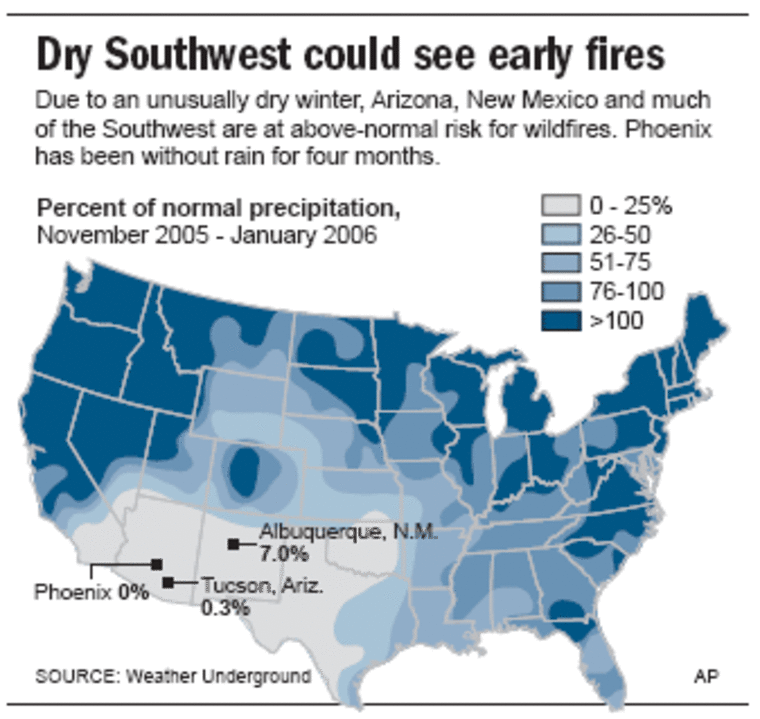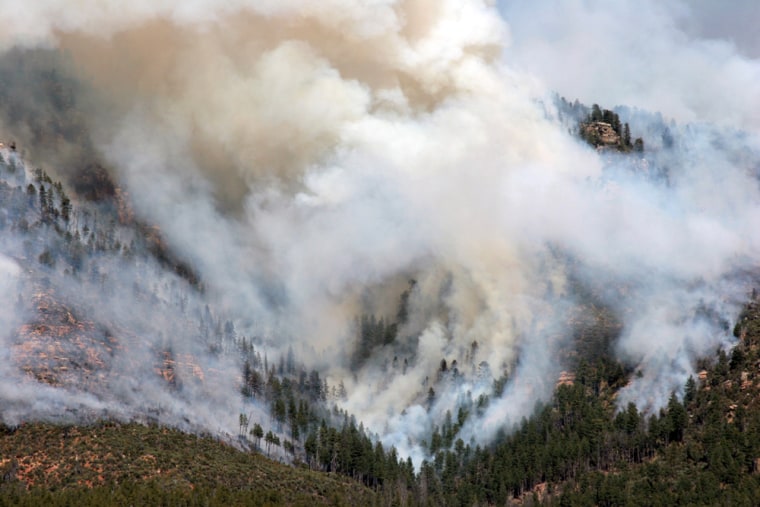The statistics in the Southwest read like a laundry list of bad news: Phoenix has been without rain for four months. Tucson is suffering through its driest winter on record, as is Albuquerque, N.M. Some Tucson homeowners have actually watered cactus plants to keep them alive.
And that’s raising a serious worry: The Southwest’s spring wildfire season could come early.
“The conditions right now are about the worst we’ve seen,” said Jim Payne, spokesman for the Forest Service’s Southwest region. “It’s already brittle dry. All we need is ignitions to see potential fires.”
While much of the West has above-average snowpack this year, Arizona and New Mexico have not been so lucky. Those states, along with parts of Alaska, Wyoming, Colorado, Nevada, Utah and California, are at above-normal risk for wildfires, according to the National Interagency Fire Center.
In Arizona last month, a fire burned more than 4,000 acres in the Tonto National Forest, stirring up nerves because it was the earliest large fire ever. In New Mexico, a grass fire of more than 26,000 acres forced the evacuation last week of a small farming-and-ranching community.
Earliest restrictions in Ariz., N.M.
Add the dry conditions and forest managers have good reason for concern. Already the Forest Service has imposed the earliest fire restrictions ever in Arizona and New Mexico and received additional funding for the fire season in those states.
“We’re kind of sitting on the edge of our chairs,” Payne said.
In a way, the Southwest’s fire season, which usually begins slowly in April and in earnest in May and June, never really ended from last year, with big range fires burning in November and December in New Mexico.

Last year, more than 8.6 million acres of state and federal lands were scorched across the country, the most since the record year of 2000.
The dry weather has also forced some weather-dependent businesses to layoff workers. At the Arizona Snowbowl ski resort near Flagstaff, 400 seasonal employees are out of work so far, and the resort has been unable to open for the first time, said resort spokesman Dave Smith. About 30 full-time employees are spending their days clearing brush and painting trim.
“It’s not very optimistic at all,” said Douglas LeComte, drought specialist with the National Oceanic and Atmospheric Administration.
A rainstorm did find its way to Arizona last week, but not a drop fell in Phoenix.
Tall grasses after last year
Even if a little rain were to fall now, it likely would do more harm than good.
That’s because last year the Southwest enjoyed a wet season, allowing grasses to grow to waist high. Now they’re dry and primed to burn. A little rain would be enough to spur more grass growth, but not enough to put moisture into trees and brush.
“What you need is not just one storm,” said Rick Ochoa, national fire weather program manager for the Bureau of Land Management in Boise, Idaho. “You need a number of storms occurring over a month or two to really put a big dent in the fire season.”
March could bring a slightly better chance for rain in the Southwest, but LeComte does not see much of a break in the drought.
“The Southwest is going to be the really big concern,” he said. “It’s looking like it’s going to be dry for most of the spring.”
